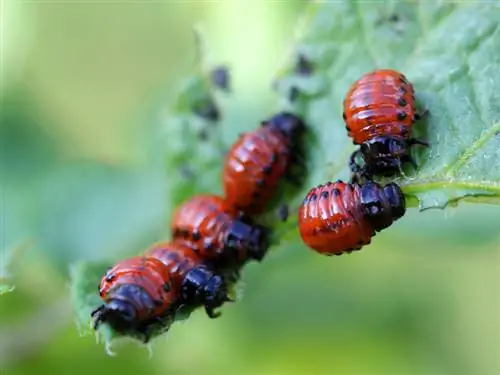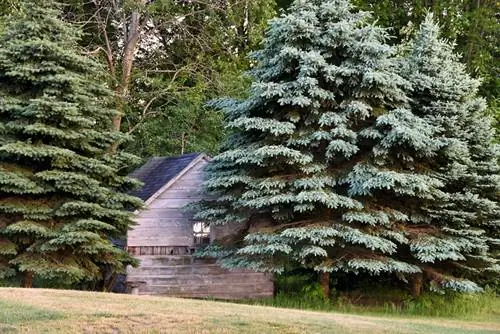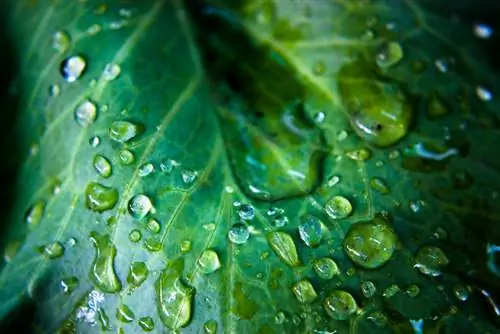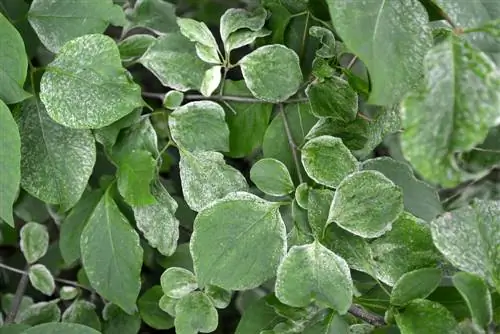- Author admin [email protected].
- Public 2023-12-16 16:46.
- Last modified 2025-01-23 11:20.
As long as it feels comfortable in its location and is cared for according to its needs, the trumpet tree (Catalpa bignonioides) is only slightly susceptible to pests and diseases.

Which diseases are typical for the trumpet tree?
Typical diseases of the trumpet tree are aphid infestation, caterpillar damage, gray mold rot and verticillium wilt. To prevent these diseases, you should plant the tree in a sunny, protected location with loose, well-drained, moist and nutrient-rich soil.
It's all about the right location
Prevention is always better than cure, which is why you can take simple measures to prevent the most common trumpet tree diseases. Various fungal and viral diseases, as well as various pests (such as aphids) primarily attack weakened specimens, while strong and he althy trees can usually defend themselves very well against such pathogens. Therefore, choose a sunny, protected location with enough space and loose, well-drained, moist and nutrient-rich soil.
Typical pests of the trumpet tree
Aphids in particular like to settle on the large, juicy leaves of the trumpet tree. You often notice an infestation because the leaves stick due to the sweet excretions - and therefore more ants find their way there. These feed on what is known as honeydew and can cause further damage to the tree. Fortunately, aphids can be controlled using fairly simple methods. Incidentally, the animals appear more frequently in spring. In addition to aphids, various types of caterpillars also like to nibble on the leaves - the only thing that helps here is regular collection, especially in the early morning hours.
Fungal diseases
Incorrectly cared for or in the wrong location, trumpet trees in particular are prone to certain fungal diseases. However, there is not always an infection behind it when the leaves of the plants turn yellow - sometimes the tree simply suffers from excessive dryness or - this needs to be clarified carefully - from waterlogging.
Gray mold rot
If mainly young, soft shoots dry up and die for seemingly no reason, gray mold rot is often behind it. This disease, caused by the mold Botrytis, often becomes noticeable in its advanced state through a grayish to blackish fungal growth. The parasite mainly occurs in wet summers, but can be easily controlled using fungicides.
Verticillium wilt
Infection with the verticillium fungus that lives in the soil is much more dangerous for the trumpet tree. This pathogen gets directly into the tree's pathways via the roots and blocks them. As a result, individual leaves and shoots initially die, and later the entire tree dies. There is no effective antidote, you can only try to radically prune the infected trumpet tree - deep into the he althy wood - and then transplant it to another location.
Tip
Above all, do not plant the trumpet tree in a location where infectious diseases such as verticillium wilt have already occurred.






